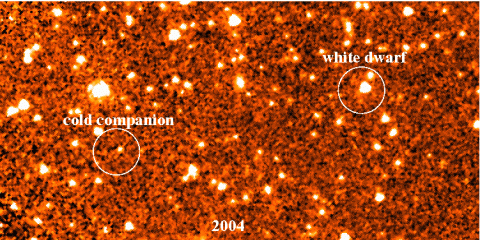Written by Whitney Clavin
Jet Propulsion Laboratory
 Pasadena, CA – NASA’s Spitzer Space Telescope has captured a picture of a nearby star and its orbiting companion — whose temperature is like a hot summer day in Arizona.
Pasadena, CA – NASA’s Spitzer Space Telescope has captured a picture of a nearby star and its orbiting companion — whose temperature is like a hot summer day in Arizona.
“We have discovered a new record-holder for the coldest companion imaged outside of the solar system, which is nearly as cold as Earth,” said Kevin Luhman, an astronomer at The Pennsylvania State University, University Park, and lead author of a pair of papers on the findings in The Astrophysical Journal. “We believe the object is a brown dwarf, but it could be a gas-giant planet as well.”

WD 0806-661 B probably belongs to a recently discovered new class of objects called Y dwarfs, the coldest category of brown dwarfs. Astronomers using NASA’s Wide-field Infrared Survey Explorer (WISE) announced the unveiling of the first six Y dwarfs in August. Those objects do not orbit stars and instead are floating by themselves in space, unlike WD 0806-661 B. Together, WISE and Spitzer are proving complementary in tracking down ever-cooler brown dwarfs, all the way down to the Y class.
Read the Penn State news release here.
NASA’s Jet Propulsion Laboratory, Pasadena, CA, manages the Spitzer Space Telescope mission for NASA’s Science Mission Directorate, Washington. Science operations are conducted at the Spitzer Science Center at the California Institute of Technology in Pasadena. Caltech manages JPL for NASA. For more information about Spitzer, visit http://spitzer.caltech.edu/ and www.nasa.gov/spitzer .


